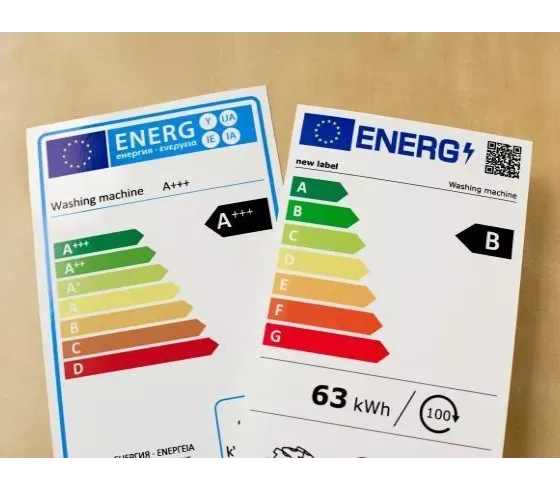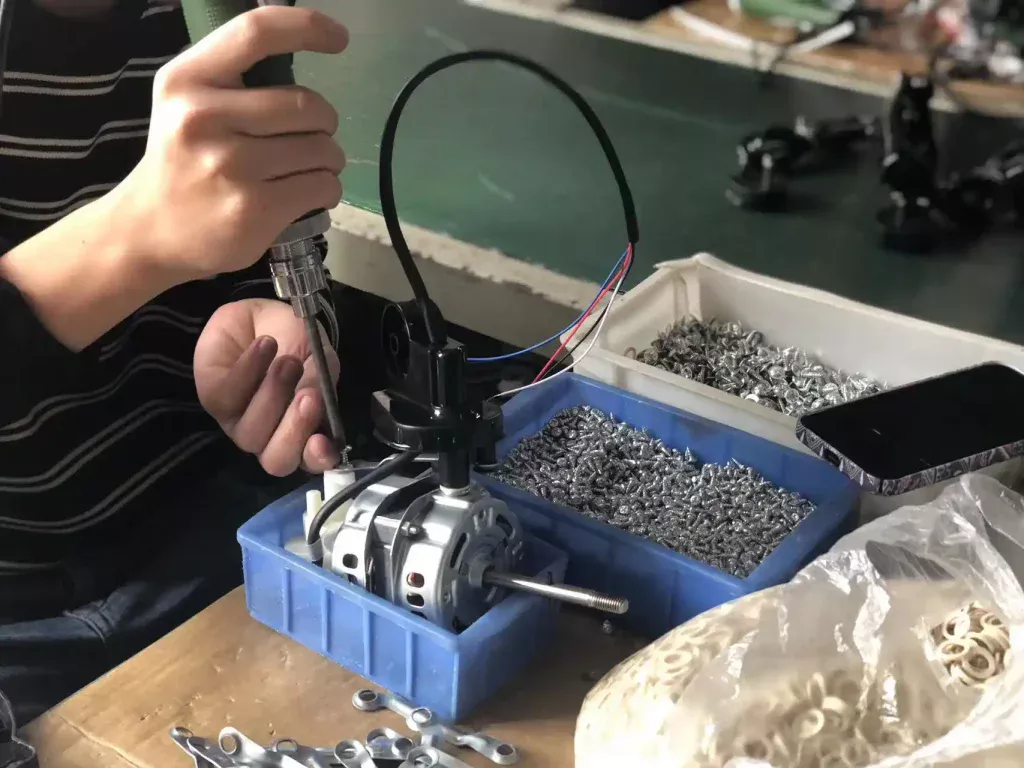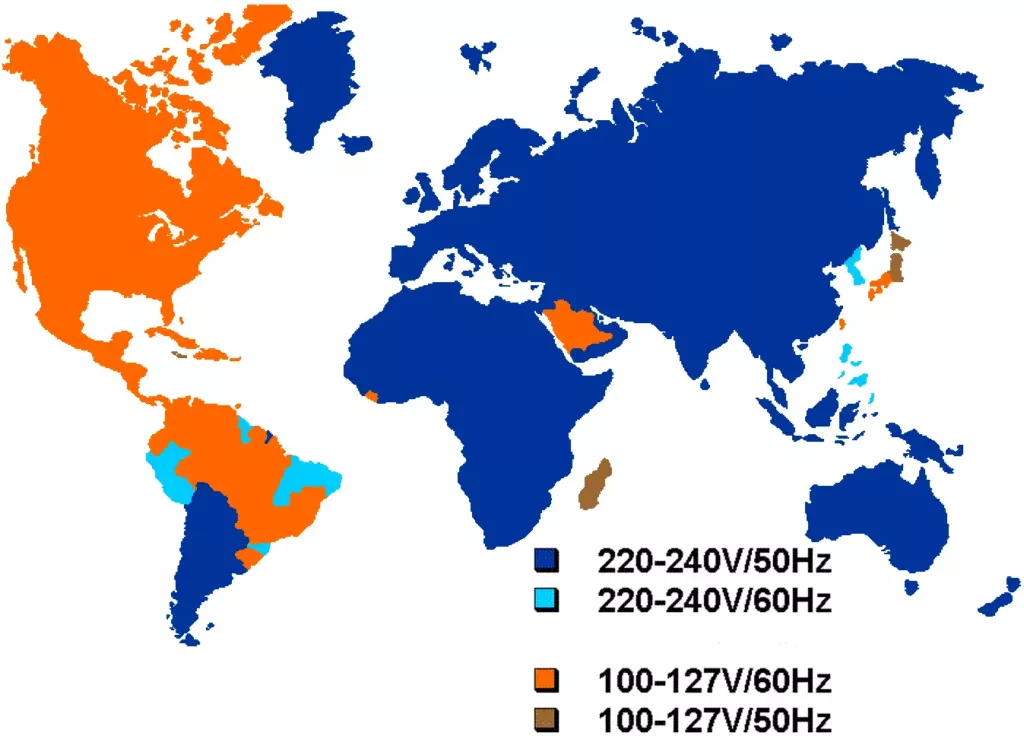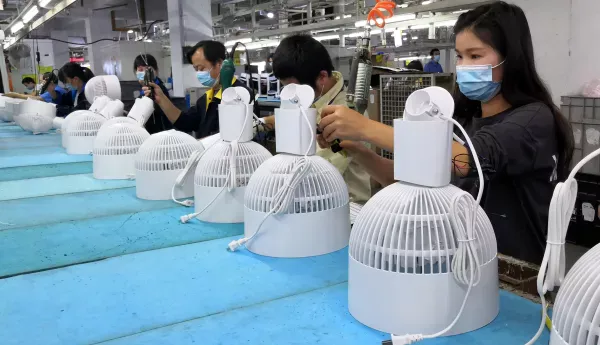As global energy costs rise, manufacturers face increasing pressure to produce power-optimized products that meet diverse market regulations.
Understanding power consumption specifications is crucial for manufacturers to meet regional energy standards, optimize production costs, and provide competitive wholesale pricing to distributors.
Table fans typically consume between 30 and 60 watts of power, making them highly marketable as energy-efficient cooling solutions for international buyers.
Let’s explore the key aspects of table fan power consumption from a manufacturing and export perspective, helping you position your products effectively in the global marketplace.
Power Consumption Standards for International Markets
Different export markets enforce varying energy efficiency standards for table fans, with requirements ranging from 30-60 watts maximum consumption to specific energy rating systems.
Manufacturers must design products that comply with these diverse regulations to avoid shipment rejections, customs delays, and potential financial penalties.

As a manufacturer exporting table fans to multiple countries, navigating the complex landscape of international energy standards is critical to your business success.
Each market has its own specific requirements that directly impact your product design, component selection, and manufacturing processes.
Regional Energy Efficiency Requirements
Understanding the specific energy standards in your target export markets is essential for successful product placement:
North American Market Requirements
The United States and Canada have specific energy efficiency standards governed by the Department of Energy (DOE) and ENERGY STAR programs:
- Energy Star Certification: Voluntary but highly marketable certification requiring fans to be at least 40% more efficient than standard models
- California Energy Commission (CEC): Stricter standards that often become nationwide benchmarks
- UL and CSA Safety Standards: Include power consumption parameters related to electrical safety
European Union Standards
The EU has some of the most stringent energy efficiency requirements:
- Energy Efficiency Index (EEI): Table fans must meet minimum efficiency requirements
- CE Marking: Mandatory for all electrical products, including specific power consumption limits
- Energy Labeling Directive: Requires clear labeling of energy consumption data
Asia-Pacific Market Variations
Asian markets have diverse requirements:
| Country | Key Energy Standard | Wattage Limitations | Special Requirements |
|---|---|---|---|
| Japan | Top Runner Program | Strict efficiency ratios | Low standby power |
| Australia | MEPS (Minimum Energy Performance Standards) | Tiered efficiency ratings | Energy rating label |
| China | China Energy Label | Class 1-5 efficiency rating | CCC certification |
| India | BEE Star Rating | 1-5 star efficiency system | ISI marking |
Testing and Certification Processes
To export table fans internationally, manufacturers must navigate various testing requirements:
Required Testing Procedures
Different markets require specific testing methodologies:
- Power Consumption Measurement: Testing under standardized conditions
- Standby Power Testing: Measuring electricity usage when the fan is not operating
- Performance-to-Power Ratio: Evaluating airflow efficiency relative to power consumption
- Durability Testing: Ensuring consistent power consumption over the product lifecycle
Certification Documentation
Prepare these essential documents for customs clearance:
- Test Reports: From accredited laboratories
- Certificates of Compliance: For each target market
- Technical Construction Files: Detailing power consumption specifications
- Declaration of Conformity: Self-declaration for certain markets
Cost Implications of Compliance
Meeting international standards affects your manufacturing costs:
- Component Selection: Higher-efficiency motors and controllers increase material costs
- Testing Fees: Multiple certifications require separate testing procedures
- Design Modifications: Market-specific adaptations may require separate production lines
- Documentation: Maintaining compliance records for each market
Investing in compliance is essential for long-term export success, as non-compliant products face increasing barriers to entry in most profitable markets.
Manufacturing Considerations for Optimizing Power Consumption
Manufacturing energy-efficient table fans requires strategic component selection, with BLDC motors reducing power consumption by 30-50% compared to traditional motors.
While these components increase production costs by 15-25%, they enable premium pricing in export markets and compliance with stricter international energy standards.

As a manufacturer, balancing power efficiency with production costs is a critical consideration that affects your competitiveness in different export markets.
Let’s examine the key manufacturing factors that influence table fan power consumption.
Motor Selection and Power Efficiency
The motor is the most critical component affecting power consumption:
Motor Technology Comparison
| Motor Type | Power Efficiency | Manufacturing Cost | Durability | Export Market Suitability |
|---|---|---|---|---|
| Shaded Pole Induction | Lower (50-60%) | Lowest ($1.50-2.50) | 3-5 years | Budget markets, less regulated regions |
| PSC (Permanent Split Capacitor) | Medium (65-75%) | Medium ($2.50-4.00) | 5-7 years | Mid-tier markets, moderate regulations |
| BLDC (Brushless DC) | Highest (80-90%) | Highest ($4.00-8.00) | 8-10+ years | Premium markets, strictly regulated regions |
Manufacturing Implications
When selecting motors for your production line:
- Inventory Management: Different motors for different export markets may require separate inventory systems
- Assembly Line Configuration: More efficient motors often require more precise assembly processes
- Quality Control Parameters: Testing procedures must verify power consumption meets specifications
- Supplier Relationships: Developing reliable sources for high-efficiency components
Circuit Design and Control Systems
The electronic control systems significantly impact power consumption:
Speed Control Mechanisms
Different control systems offer varying efficiency levels:
- Resistive Controls: Simplest and cheapest to manufacture but least efficient
- Capacitive Controls: Better efficiency but more components and assembly complexity
- Electronic Controls: Highest efficiency but requires more sophisticated manufacturing capabilities
- Microprocessor Controls: Optimal power management but highest component and assembly costs
Manufacturing Process Adaptations
Implementing advanced control systems requires:
- SMT (Surface Mount Technology) Lines: For electronic control boards
- Increased Testing Points: More complex circuitry requires additional quality checks
- Programming Stations: For microcontroller-based systems
- ESD (Electrostatic Discharge) Controls: More critical with sensitive electronics
Blade Design and Materials
Fan blade efficiency directly impacts power consumption:
Material Selection Trade-offs
| Blade Material | Efficiency Impact | Manufacturing Complexity | Cost Implication | Export Considerations |
|---|---|---|---|---|
| Standard Plastic | Baseline | Low | Lowest | Acceptable for most markets |
| Reinforced Plastic | 5-10% improvement | Medium | Low-Medium | Good balance for most exports |
| Aerodynamic Design | 10-20% improvement | High | Medium | Preferred for premium markets |
| Composite Materials | 15-25% improvement | Very High | Highest | Specialty high-end markets |
Production Process Requirements
Advanced blade designs require:
- Precision Molding Equipment: For aerodynamic profiles
- Additional Quality Control Steps: To verify blade balance and alignment
- Specialized Assembly Fixtures: To maintain precise angles and clearances
- Material Handling Protocols: For specialty composites or treatments
Quality Control for Power Consumption Specifications
Ensuring consistent power consumption across production batches:
Testing Protocols
Implement these quality control measures:
- 100% Power Consumption Testing: Every unit should be tested for power draw
- Batch Sample Performance Testing: Airflow-to-power ratio verification
- Accelerated Life Testing: Ensuring power consumption remains stable over time
- Temperature Variation Testing: Verifying performance across operating conditions
Manufacturing Documentation
Maintain these records for export compliance:
- Component Traceability: Tracking motor and control components
- Test Results Database: Documenting power consumption for each production batch
- Statistical Process Control Charts: Monitoring production consistency
- Calibration Records: For all power measurement equipment
Wholesale Pricing Strategies Based on Power Consumption
Energy-efficient table fans with 30-50% lower power consumption can command 20-40% higher wholesale prices in developed markets.
Manufacturers should segment pricing strategies by region, with premium pricing in energy-conscious markets like the EU and competitive pricing in developing markets where initial purchase cost remains the primary buying factor.

Developing effective pricing strategies based on power consumption specifications is essential for maximizing profitability across different export markets.
Let’s explore how to structure your wholesale pricing to reflect the value of energy efficiency.
Market Segmentation by Energy Consciousness
Different markets value energy efficiency differently:
High Energy Consciousness Markets
In these markets, emphasize lifetime cost savings:
- European Union: Highly regulated with energy-conscious consumers
- Japan: Strong preference for energy efficiency
- Australia/New Zealand: Strict energy standards and labeling
- Canada: Increasing focus on energy conservation
For these markets, premium pricing for high-efficiency models is readily accepted when properly communicated.
Moderate Energy Consciousness Markets
Balance efficiency with competitive pricing:
- United States: Varies by region, with coastal areas more energy-conscious
- South Korea: Growing awareness of energy efficiency
- Urban China: Increasing preference for energy-saving features
- Gulf States: High electricity costs driving efficiency interest
These markets support tiered pricing strategies with clear efficiency differentiation.
Price-Sensitive Markets
Focus on meeting minimum standards while maintaining competitive pricing:
- Southeast Asia: Price remains primary consideration
- Africa: Initial purchase cost typically outweighs efficiency
- Rural India: Very price-sensitive market
- South America: Mixed market with price sensitivity predominating
For these markets, offer basic compliant models with competitive pricing.
Pricing Structure Recommendations
Implement these pricing strategies for different product tiers:
| Efficiency Level | Manufacturing Cost Premium | Recommended Wholesale Markup | Target Markets | Marketing Emphasis |
|---|---|---|---|---|
| Basic (Standard Motors) | Baseline | 15-20% | Price-sensitive regions | Affordability, Reliability |
| Mid-Tier (PSC Motors) | +10-15% | 25-30% | Moderate consciousness markets | Balance of efficiency and value |
| Premium (BLDC Motors) | +20-30% | 35-45% | High consciousness markets | Lifetime savings, Premium features |
| Ultra-Efficient | +35-50% | 50-60% | Specialty/Professional markets | Maximum efficiency, Advanced technology |
Value Communication Strategies
Help your distributors understand and communicate the value of energy efficiency:
ROI Calculation Tools
Provide your wholesale buyers with:
- Energy Savings Calculators: Simple tools showing lifetime cost savings
- Comparison Charts: Visualizing efficiency differences between models
- Market-Specific Payback Periods: Calculations based on local electricity costs
- Certification Value: Explaining the market value of various energy certifications
Distributor Training Materials
Develop these resources for your distribution partners:
- Technical Specification Sheets: Highlighting power consumption advantages
- Competitive Comparison Guides: Positioning your products against competitors
- Sales Talking Points: Specific to each market’s energy concerns
- Display Materials: Emphasizing energy efficiency for retail settings
Volume Discount Structures
Design volume incentives that maintain profitability:
- Tiered Efficiency Discounts: Larger discounts for higher-efficiency models at volume
- Market-Specific Programs: Tailored volume incentives for different regions
- Mixed-Model Incentives: Encouraging distributors to carry multiple efficiency tiers
- Seasonal Adjustment Programs: Accounting for seasonal demand variations
Export Market Adaptation for Power Consumption
Table fan manufacturers must adapt products for different export markets, with power consumption requirements varying from 30-60 watts maximum in energy-conscious regions to less restrictive standards in developing markets.
Successful exporters develop 2-3 core platforms with market-specific modifications to balance manufacturing efficiency with regulatory compliance.

Adapting your table fan designs for different export markets requires careful consideration of various factors beyond just power consumption.
Let’s examine the key adaptations needed for successful international distribution.
Voltage and Frequency Considerations
Power consumption specifications must account for different electrical systems:
Global Electrical System Variations
| Region | Voltage | Frequency | Impact on Fan Design | Power Consumption Effect |
|---|---|---|---|---|
| North America | 110-120V | 60Hz | Lower voltage motors | Higher current draw |
| Europe | 220-240V | 50Hz | Higher voltage motors | Lower current draw |
| Japan | 100V | 50/60Hz | Special motor design | Variable efficiency |
| Australia | 230V | 50Hz | Similar to Europe | Standard efficiency |
| UK | 230V | 50Hz | Special plug requirements | Standard efficiency |
Manufacturing Adaptations
To address these variations:
- Multi-Voltage Motors: Designing motors that operate efficiently across voltage ranges
- Frequency Compensation: Ensuring consistent performance at different frequencies
- Power Supply Design: Creating efficient power supplies for electronic controls
- Testing Protocols: Verifying performance across all target electrical systems
Regulatory Documentation Requirements
Different markets require specific power consumption documentation:
Essential Documentation by Region
European Union:
- Energy Efficiency Index calculations
- Technical documentation in multiple languages
- CE Declaration of Conformity
North America:
- UL/CSA test reports
- Energy consumption certification
- FCC compliance for electronic controls
Asia-Pacific:
- Country-specific energy labels
- CCC documentation for China
- BEE certification for India
Documentation Management Systems
Implement these systems to maintain compliance:
- Centralized Document Repository: Single source for all certification documents
- Market-Specific Checklists: Ensuring complete documentation for each shipment
- Expiration Tracking: Monitoring certification renewal requirements
- Regulatory Update Monitoring: Staying current with changing requirements
Packaging and Labeling Requirements
Energy consumption information must be properly communicated:
Energy Labeling Variations
Different markets require specific energy information displays:
- EU Energy Label: Standardized label with efficiency classes
- North American EnergyGuide: Yellow label with annual operating cost
- Australian Energy Rating: Star rating system
- Asian Markets: Various national labeling systems
Packaging Adaptations
Implement these packaging strategies:
- Modular Packaging Design: Core package with market-specific inserts
- Multi-Language Energy Information: Clear communication across markets
- QR Codes Linking to Detailed Specifications: Providing additional information
- Distributor Customization Areas: Allowing local adaptation
After-Sales Support for Energy Performance
Maintaining energy efficiency claims requires proper support:
User Instructions
Provide clear guidance on:
- Optimal Usage Patterns: How to minimize power consumption
- Maintenance Requirements: Preserving energy efficiency
- Troubleshooting Energy Issues: Identifying problems affecting consumption
- Local Energy-Saving Programs: Market-specific incentives or programs
Warranty Considerations
Adapt warranty terms to address:
- Energy Performance Guarantees: Assurances about continued efficiency
- Market-Specific Requirements: Varying consumer protection laws
- Repair vs. Replace Policies: Maintaining energy efficiency after repairs
- Authorized Service Provider Training: Ensuring proper maintenance of efficiency
Conclusion
For table fan manufacturers focused on export markets, understanding power consumption specifications is crucial for regulatory compliance, competitive pricing, and market positioning.
By optimizing designs for 30-60 watt operation and adapting products to regional requirements, manufacturers can successfully distribute energy-efficient fans worldwide.
FAQ
How much electricity do table fans use compared to air conditioners?
Table fans consume significantly less electricity than air conditioners, using only 30-60 watts compared to 1000-1500 watts for small AC units.
This makes table fans approximately 25-30 times more energy-efficient, an important selling point for cost-conscious export markets.
Do BLDC motor table fans require special voltage adapters for different export markets?
Most modern BLDC motor table fans include multi-voltage capability (100-240V), eliminating the need for separate adapters.
Manufacturers should still include appropriate plug adapters and ensure control circuitry functions correctly across different electrical systems for seamless international distribution.
How do different blade materials affect power consumption in table fans?
Aerodynamic blade designs can reduce power consumption by 10-20% compared to standard blades.
Reinforced plastic and composite materials improve efficiency through reduced weight and optimized airflow, allowing manufacturers to meet stricter energy standards while maintaining performance specifications.
What testing equipment is required for verifying table fan power consumption for export?
Manufacturers need calibrated power meters with ±0.5% accuracy, standardized airflow measurement equipment, and temperature-controlled testing environments.
Most export markets require testing by accredited laboratories using IEC 60879 or regional equivalent standards for certification.
How does fan speed control technology impact manufacturing costs and export pricing?
Advanced electronic speed controls increase manufacturing costs by 15-30% but reduce power consumption by 20-40% compared to resistive controls.
This technology investment allows manufacturers to command premium pricing in energy-conscious markets while meeting increasingly stringent efficiency regulations.
What is the typical ROI period for investing in energy-efficient fan manufacturing equipment?
Manufacturing equipment for energy-efficient table fans typically shows ROI within 18-24 months for high-volume producers.
The investment in precision molding, advanced motor winding, and electronic control assembly equipment is offset by premium pricing and access to regulated markets with higher profit margins.
How do power consumption standards differ between residential and commercial table fans for export?
Commercial table fans face stricter power consumption standards in most export markets, typically requiring 15-25% higher efficiency than residential models.
Manufacturers should implement separate testing protocols and certification processes for commercial products, particularly for EU and North American markets.
What documentation is required for customs clearance regarding power consumption specifications?
Export documentation must include test reports from accredited laboratories, energy efficiency certificates specific to destination markets, technical data sheets with clear power consumption specifications, and declarations of conformity.
Some markets like the EU require this documentation in multiple languages.


